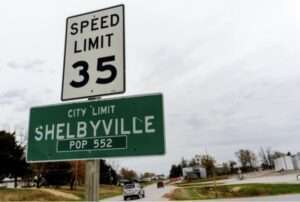Jonathan Ahl
KOSU
Rural America is continuing to get older, and a new report shows the extent has hit a new high.
The U.S. Department of Agriculture’s annual Rural America at a Glance report shows more than 20% of rural residents are over the age of 65 compared to 16% in urban areas.
“The aging of the baby-boom generation will continue to contribute to the loss of working-age adults through the end of this decade,” the report from the USDA’s Economic Research Service stated.
The report also said there is a corresponding decrease in the working age population, with those 18-64 making up 58% of non-metro residents, compared with 61% of metro residents.
Fixing the problem will take a lot of work from a lot of different areas, according to Mary Hendrickson, a professor of rural sociology at the University of Missouri.
“There’s federal issues, there are state issues, there are community issues, there are regional issues. Can we start thinking about regional networks? There really is not just one thing,” she said.
Hendrickson said rural areas need to make things better for families, and that can include everything from better broadband access to establishing reliable daycare and preschool options, which are not only lacking but often non-existent in rural areas.
“If we’re going to talk about wanting to be family friendly, then we’re going to need to have some policies that are helpful,” Hendrickson said.
Some rural communities have tried creative ways to try and attract younger people to make their home away from urban areas, including offering grants to new homeowners and establishing recruiting committees to try and get former residents to move back.
“Those kinds of programs are essential,” Hendrickson said. “Folks who live in these rural areas sometimes look around and think more of the challenges rather than thinking about what are the opportunities for helping and making their place attractive for a younger generation.”
Other rural advocates caution those kinds of projects won’t be enough and argue for more systemic change at the federal level.
“We learned during COVID that many people can work from anywhere, and that gave a lot of hope to rural communities looking to increase their population,” said Chris Merritt, executive director of the Illinois Institute of Rural Affairs at Western Illinois University. “But state and federal governments need to get more involved to make sure these communities have health care, schools, transportation and grocery stores. Those things can’t happen at just the community level.”
While rural communities look to increase their younger population, they will also have to deal with new challenges of having more older residents.
“Declines in the working-age population may make it harder to meet labor demands in some rural industries and local labor markets. At the same time, many rural areas lack sufficient health care capacity, broadband service, community centers, and other services to address the challenges associated with an aging population,” the USDA report said.




